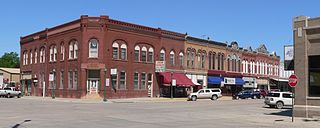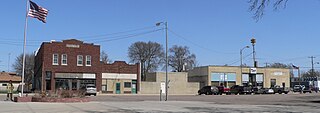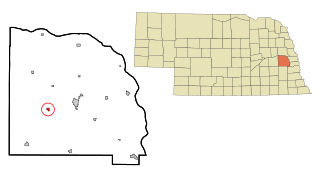
Valley County is a county in the U.S. state of Nebraska. As of the 2020 United States Census, the population was 4,059. Its county seat is Ord.

Sherman County is a county in the U.S. state of Nebraska. As of the 2020 United States Census, the population was 2,959. Its county seat is Loup City. The county was created in 1870, and was organized in 1872. It was named for American Civil War General William Tecumseh Sherman.

Nance County is a county in the U.S. state of Nebraska. As of the 2020 census, the population was 3,380. Its county seat is Fullerton.

Loup County is a county in the U.S. state of Nebraska. As of the 2020 United States Census, the population was 607, making it Nebraska's fifth-least populous county and the tenth-least populous county in the United States. Its county seat is Taylor. The county was named after the Pawnee Loup Indians.

Howard County is a county in the state of Nebraska. As of the 2020 United States Census, the population was 6,475. Its county seat is St. Paul. The county was formed in 1871 and named after Civil War General Oliver Otis Howard.

Greeley County is a county in the U.S. state of Nebraska. As of the 2020 census, the population was 2,188. Its county seat is Greeley.

Garfield County is a county in the U.S. state of Nebraska. As of the 2020 United States Census, the population was 1,813. Its county seat is Burwell. The county was organized in 1884; it was named for James A. Garfield, 20th President of the United States.

Dodge County is a county in the U.S. state of Nebraska. As of the 2020 United States Census, the population was 37,167. Its county seat is Fremont. The county was formed in 1855 and named after Iowa Senator Augustus C. Dodge.

Custer County is a county in the U.S. state of Nebraska. As of the 2020 United States Census, the population was 10,545. Its county seat is Broken Bow. The county was formed in 1877 and named after General George Armstrong Custer, who was killed at the Battle of Little Bighorn.

Brown County is a county in the U.S. state of Nebraska. As of the 2020 United States Census, the population was 2,903. Its county seat is Ainsworth. The county was established in 1883 and named for two members of the legislature who reported the bill for the county's organization.

Hamburg is a city in Fremont County, Iowa, United States, that is the most southwestern city in Iowa, hugging the borders of Missouri to the south and Nebraska to the west. It is situated between the Nishnabotna and Missouri rivers. The population was 890 at the time of the 2020 census. It derives its name from the German city of Hamburg.

Dunning is the most populous village in Blaine County, Nebraska, United States. The population was 80 at the 2020 census.

Pleasanton is a village in Buffalo County in the state of Nebraska in the Midwestern United States. At the 2010 census, its population was 341.

Linwood is a village in Butler County, Nebraska, United States. The population was 88 at the 2010 census.

West Point is a city in and the county seat of Cuming County, Nebraska, United States. The population was 3,504 at the 2020 census.

Hooper is a city in Dodge County, Nebraska, United States. The population was 830 at the 2010 census.

Taylor is a village in, and the county seat of, Loup County, Nebraska, United States. The population was 190 at the 2010 census.

Duncan is a village in Platte County, Nebraska, United States. The population was 351 at the 2010 census.

Weston is a village in Saunders County, Nebraska, United States. The population was 250 at the 2020 census.

Washington is a village in Washington County, Nebraska, United States. The population was 150 at the 2010 census.




















